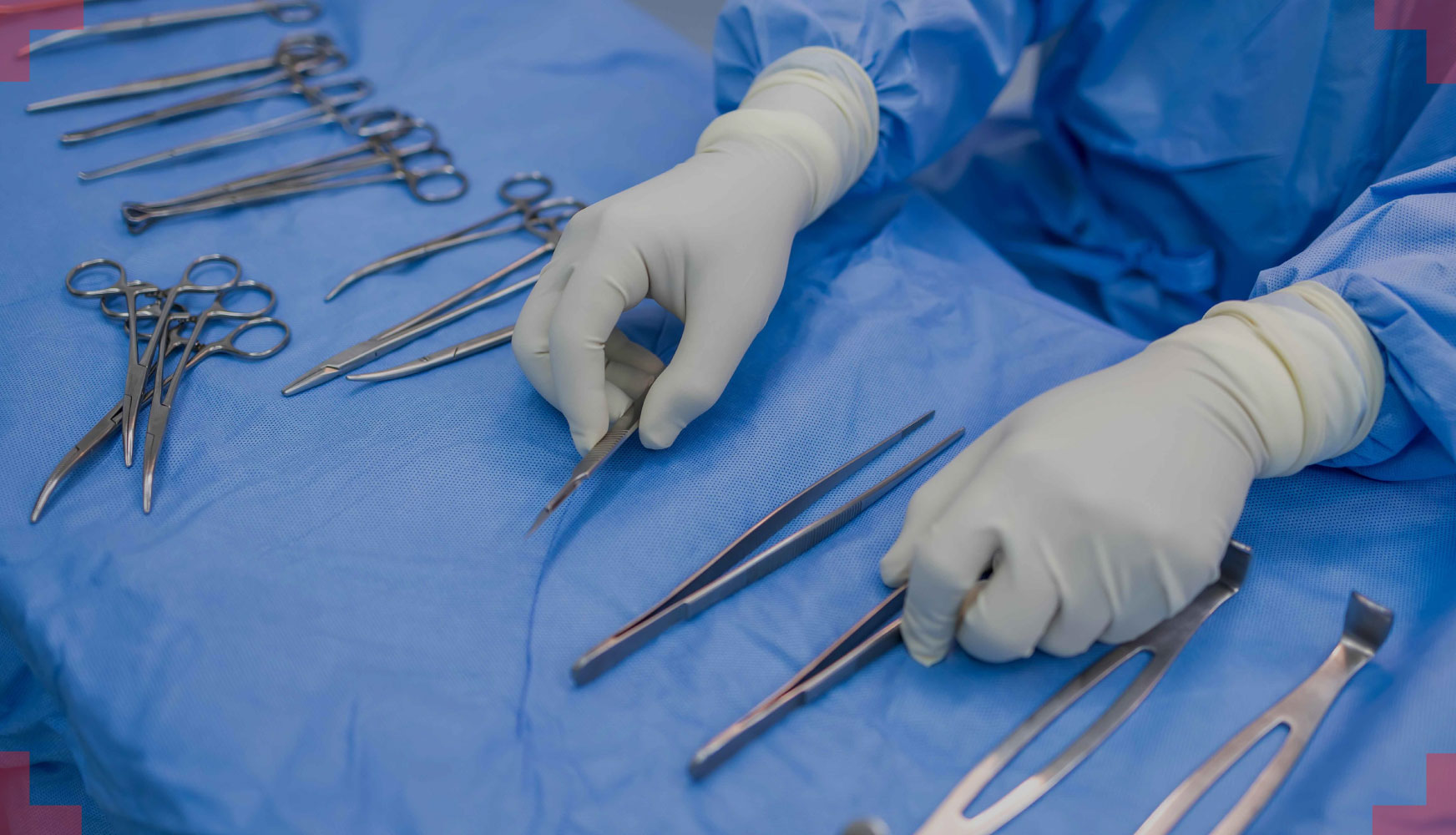Surgical instruments are the silent yet indispensable partners of every successful operation. Their precision, design, and quality directly influence the outcome of surgical procedures, determining not only the success of the operation but also the safety and recovery of the patient. In modern healthcare, where technological advancement meets human expertise, surgical instruments serve as the bridge that enables surgeons to perform with the highest level of accuracy. Each tool, from scalpels and forceps to retractors and clamps, plays a vital role in transforming surgical intentions into effective, safe actions that save lives and restore health.
The Importance of Precision in Surgical Instruments
Every surgical procedure demands precision. Even a fraction of a millimeter can make a difference between success and complication. Surgical instruments are meticulously engineered to provide the control and accuracy surgeons need during operations. The balance, sharpness, and ergonomics of these tools are designed to respond to the surgeon’s hand movements with exceptional sensitivity. When surgical instruments are manufactured to exacting standards, they allow surgeons to make incisions, manipulate tissues, and perform complex maneuvers with remarkable confidence and precision.
The use of high-quality surgical instruments reduces the risk of human error by ensuring that tools perform as expected under pressure. A well-crafted scalpel will deliver a clean incision that minimizes tissue damage, while finely tuned forceps provide a secure yet delicate grip. The engineering behind these tools considers both the physical properties of the materials and the functional requirements of the surgical field. Stainless steel, titanium, and other durable materials are selected for their strength, corrosion resistance, and ability to maintain sharpness and integrity even after multiple sterilization cycles. This level of precision engineering ensures that surgical instruments remain reliable assets in even the most challenging procedures.
Moreover, precision in surgical instruments goes beyond their mechanical performance. It encompasses how seamlessly they integrate into surgical workflows. Instruments designed with ergonomic handles and balanced weight reduce surgeon fatigue during long operations, leading to improved performance and consistent results. As the field of medicine continues to advance, innovations such as laser-guided instruments and robotic-assisted tools further enhance precision, allowing for minimally invasive procedures that accelerate patient recovery while maintaining surgical accuracy.
Enhancing Safety Through Sterility and Maintenance
While precision defines how surgical instruments function, safety ensures that they do so without introducing risks to patients. Maintaining sterile surgical instruments is one of the most critical aspects of hospital safety protocols. The sterilization process, when done correctly, eliminates microorganisms and prevents infections that can complicate postoperative recovery. Hospitals rely on rigorous sterilization methods such as autoclaving, chemical disinfection, and ultrasonic cleaning to ensure every surgical tool is completely free from contaminants before use.
Proper maintenance of surgical instruments is equally vital. Instruments must be cleaned immediately after procedures to prevent biological materials from adhering to their surfaces. Any residue can compromise sterility and damage the instrument over time. Regular inspections for signs of wear, corrosion, or misalignment help identify tools that need repair or replacement. Even minor damage, such as a dull blade or bent tip, can reduce performance and endanger patient safety. Consistent maintenance routines ensure surgical instruments remain in optimal condition and ready for use whenever required.
Training medical staff on proper handling and maintenance further reinforces safety. Technicians responsible for cleaning and sterilization must understand the unique requirements of each type of instrument. Some tools are delicate and require manual cleaning, while others can withstand high-pressure steam sterilization. By adhering to established protocols, hospitals not only protect patients but also extend the lifespan of their valuable surgical equipment. The attention to detail in sterilization and maintenance is a reflection of the healthcare facility’s commitment to excellence and patient safety.
The Role of Innovation in Surgical Instrument Development
The evolution of surgical instruments reflects the broader progress of medicine. Innovation continues to redefine what is possible in the operating room, offering tools that improve both precision and safety. Advanced surgical instruments now incorporate modern technologies such as robotics, sensors, and smart materials. These innovations enable surgeons to perform procedures that were once thought impossible, with smaller incisions, reduced bleeding, and faster recovery times.
Robotic-assisted surgery, for instance, utilizes instruments that respond to micro-movements from the surgeon’s controls, offering an unprecedented level of accuracy. These robotic tools can access areas of the body that traditional instruments cannot reach easily, reducing the invasiveness of procedures. Similarly, endoscopic instruments equipped with cameras and lighting systems allow surgeons to visualize internal structures in real time, enhancing their ability to navigate complex anatomy safely.
Another area of advancement lies in the development of single-use surgical instruments. These disposable tools eliminate the risk of cross-contamination between patients and reduce the burden of sterilization. Although single-use instruments are designed for convenience and safety, they are crafted with the same level of precision and reliability as reusable ones. Manufacturers continue to refine the design and materials of these instruments to maintain consistent performance while adhering to environmental and cost considerations.
The integration of artificial intelligence and digital monitoring systems in surgical instruments is also transforming operating rooms. Smart instruments can provide feedback on pressure, temperature, or positioning during procedures, allowing surgeons to make real-time adjustments that enhance both accuracy and safety. This combination of data and dexterity represents the next stage in surgical innovation, merging human expertise with technological intelligence to achieve optimal results.
The Connection Between Surgical Instruments and Patient Outcomes
The link between the quality of surgical instruments and patient outcomes cannot be overstated. Every successful surgery depends on the reliability of the tools being used. When surgical instruments perform flawlessly, surgeons can focus entirely on the procedure without distraction or hesitation. This efficiency not only minimizes the duration of surgery but also reduces the risk of complications such as bleeding or infection.
Patients benefit directly from the advancements in surgical instruments through shorter hospital stays, quicker recovery, and fewer postoperative issues. Minimally invasive tools, for example, require smaller incisions, resulting in less trauma and pain for patients. The precision of these instruments ensures that surrounding tissues remain unaffected, promoting faster healing. Hospitals that invest in top-tier surgical instruments also demonstrate a commitment to delivering superior care, reinforcing patient trust and confidence in their services.
Ultimately, surgical instruments represent the perfect balance between science and craftsmanship. Their design embodies the pursuit of excellence in medicine, combining technical innovation with human skill to ensure every surgical act is executed safely and effectively. From the most delicate neurosurgical tools to the sturdy orthopedic devices, each instrument plays its part in preserving life and advancing healthcare.
The future of surgical instruments continues to evolve alongside medical technology. As materials become more sophisticated and integration with digital systems deepens, the potential for even greater precision and safety grows. What remains constant, however, is the unwavering importance of quality surgical instruments in every operating room. Their role in ensuring accuracy, protecting patient safety, and enabling medical breakthroughs will continue to shape the world of surgery for generations to come.





